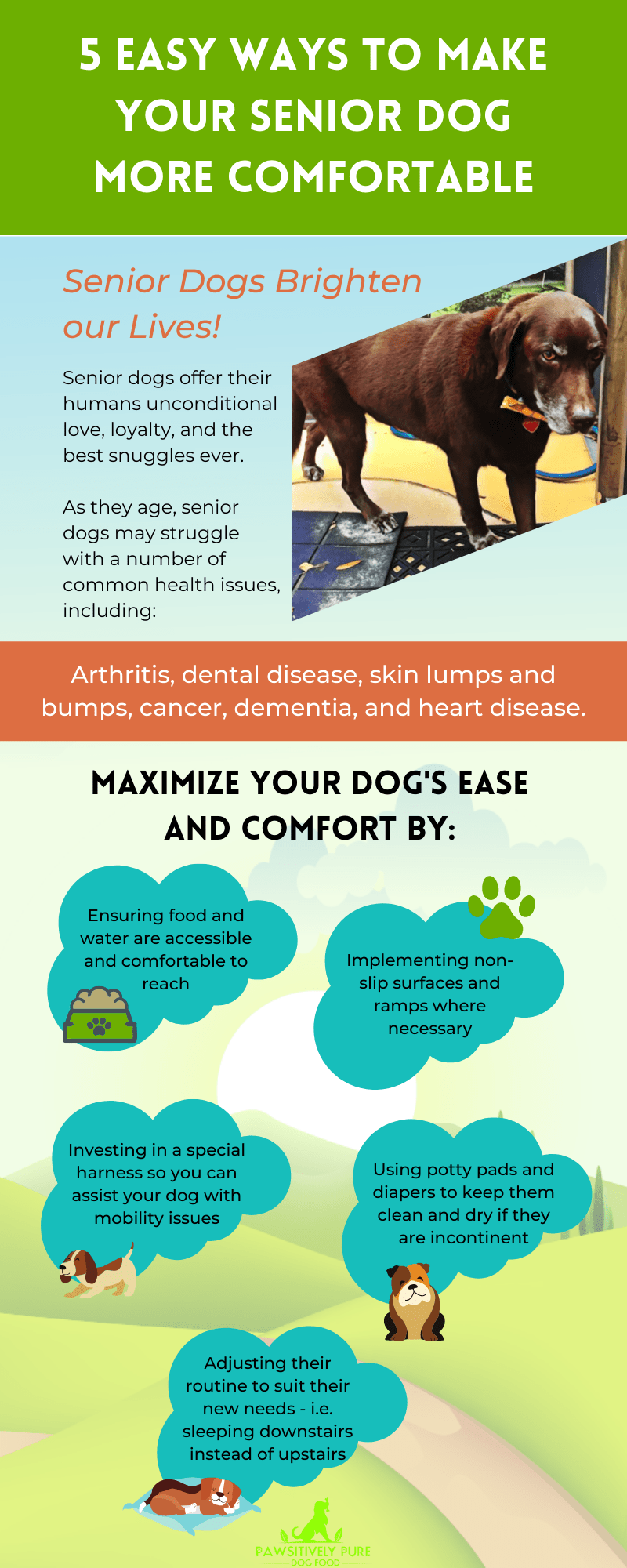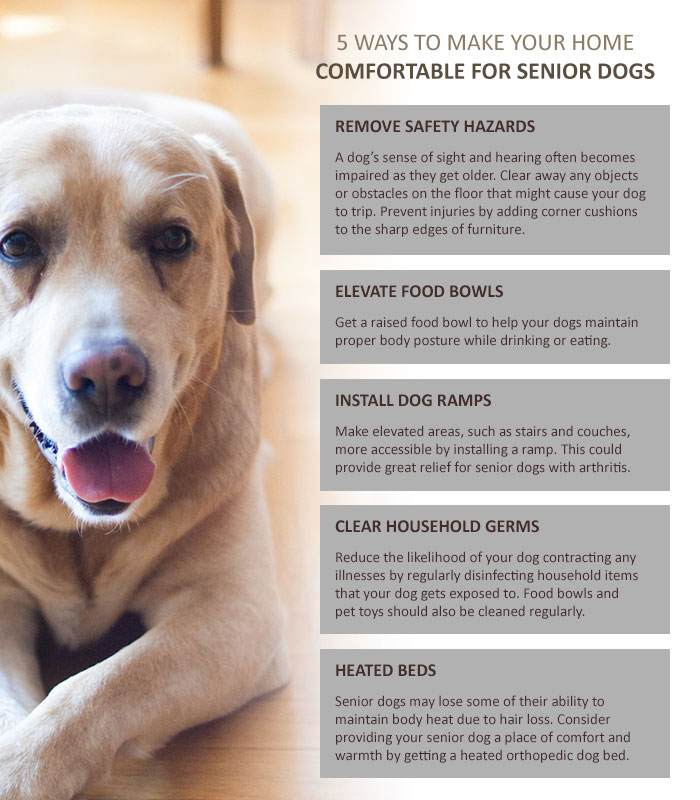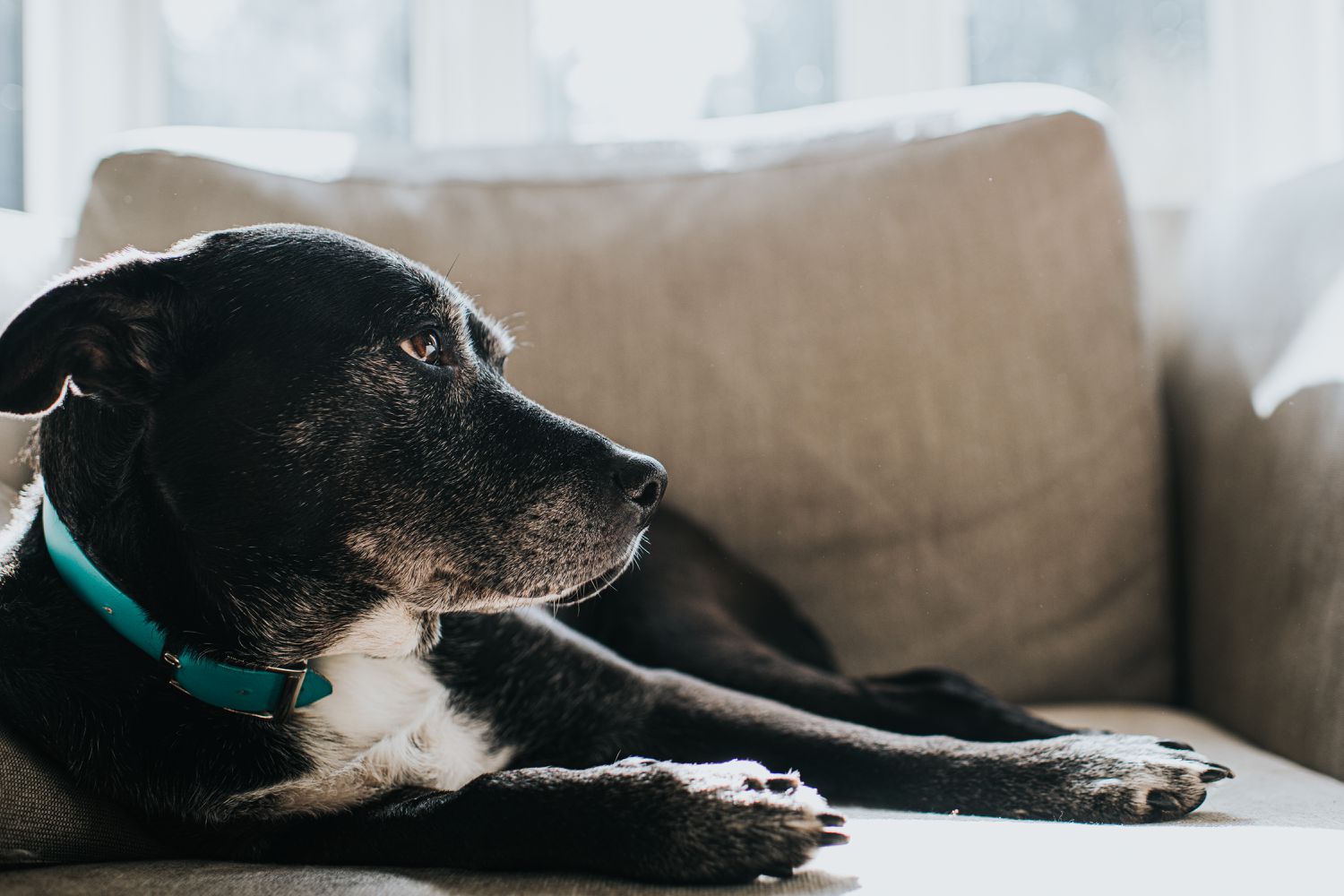Welcome to our guide on creating a comfortable and safe living space for your senior dog. As your furry friend ages, it’s important to ensure that their environment is tailored to their changing needs. From providing soft bedding for achy joints to clearing clutter for easy navigation, there are a variety of simple adjustments you can make to help your senior dog feel more at ease in their home. By following these tips and tricks, you can create a loving and safe space where your senior dog can enjoy their golden years to the fullest. Are you looking to ensure that your senior pup has a safe and comfortable living space? As our furry friends age, they may need special accommodations to make sure they are happy and healthy. In this article, we will explore tips and tricks for creating a cozy and secure environment for your senior dog. From bedding to lighting, we will cover everything you need to know to keep your beloved pet comfortable in their golden years. Let’s get started!
Creating a Cozy Bedding Area
When it comes to ensuring your senior dog is comfortable, having a cozy bedding area is essential. As dogs get older, they may develop arthritis or other joint issues that can make lying on hard surfaces uncomfortable. Investing in a quality orthopedic dog bed can provide much-needed support and comfort for your senior pup. Make sure the bed is large enough for your dog to stretch out comfortably and has a washable cover for easy cleaning.
Ensuring that your dog’s bedding area is warm and cozy is also important, especially during colder months. Placing a soft blanket or heating pad in your dog’s bed can help keep them warm and cozy, reducing any discomfort they may feel from the cold. Remember to wash your dog’s bedding regularly to keep it clean and odor-free.
Providing Easy Access to Food and Water
As dogs age, they may experience mobility issues that can make it difficult for them to reach their food and water bowls. To make mealtime easier for your senior dog, consider investing in elevated food and water bowls. These bowls are raised off the ground, making it easier for your pup to access their food and water without straining their neck or back.
Additionally, adding non-slip mats underneath your dog’s food and water bowls can prevent spills and accidents, especially if your dog has trouble with coordination or balance. This simple addition can make mealtimes more enjoyable and less messy for both you and your furry friend.

This image is property of www.marthastewart.com.
Good Lighting for Visibility
As dogs age, their eyesight may start to deteriorate, making it harder for them to see in low light conditions. Ensuring that your senior dog’s living space is well-lit can help prevent accidents and make it easier for them to navigate their surroundings. Consider adding night lights in hallways and other areas your dog frequents to provide them with additional light during the night.
Another tip is to keep your dog’s living space clutter-free to prevent tripping hazards. Make sure walkways are clear of toys, shoes, or other items that could cause your senior dog to stumble or fall. By providing good lighting and keeping their living space tidy, you can help your senior dog stay safe and comfortable.
Managing Temperature Control
Just like humans, dogs can struggle with regulating their body temperature as they age. Senior dogs may have a harder time staying warm in colder weather or keeping cool in hotter temperatures. To ensure your senior pup is comfortable year-round, consider adjusting the temperature in your home to meet their needs.
During colder months, providing your dog with a warm sweater or coat can help keep them cozy indoors and during walks. You can also use heated blankets or pads to keep your dog warm when they are resting. In the summer, make sure your dog has access to shade and plenty of water to prevent overheating. Adjusting the temperature in your home and providing appropriate clothing and bedding can help keep your senior dog comfortable regardless of the season.

This image is property of ledogcompany.com.
Implementing Mobility Aids
As dogs age, they may experience mobility issues that can make it difficult for them to move around their living space. To help your senior dog maintain their independence and quality of life, consider implementing mobility aids such as ramps or stairs to help them access areas they may struggle to reach.
If your senior dog has trouble climbing stairs, installing a ramp can make it easier for them to access higher areas in your home. Similarly, if your dog enjoys spending time on the couch or bed but has trouble jumping up, consider using pet stairs to provide them with a gentle incline to climb. By making these simple modifications to your home, you can help your senior dog stay active and comfortable.
Regular Veterinary Check-Ups
Ensuring your senior dog’s health is in good condition is essential to their overall well-being. Regular veterinary check-ups can help catch any potential health issues early and provide you with peace of mind knowing that your furry friend is well cared for. During these check-ups, your vet can assess your dog’s physical health, recommend any necessary treatments or medications, and advise you on how to best care for your senior dog.
Regular dental check-ups are also important for senior dogs, as dental issues can lead to other health problems if left untreated. Brushing your dog’s teeth regularly and providing them with dental chews or toys can help maintain their oral health between vet visits. By staying on top of your senior dog’s health, you can ensure they have a comfortable and happy life in their golden years.

This image is property of images.squarespace-cdn.com.
Incorporating Mental Stimulation
Keeping your senior dog mentally stimulated is just as important as physical exercise when it comes to their overall well-being. As dogs age, they may start to experience cognitive decline, leading to issues such as confusion or memory loss. Providing your senior dog with mental stimulation can help keep their mind sharp and prevent boredom or anxiety.
Interactive toys, puzzle feeders, and training games are great ways to engage your senior dog’s brain and keep them mentally active. You can also introduce new environments or scents during walks to stimulate your dog’s senses and provide them with mental enrichment. By incorporating mental stimulation into your senior dog’s daily routine, you can help keep their mind sharp and improve their overall quality of life.
Monitoring Weight and Nutrition
Maintaining a healthy weight is crucial for your senior dog’s health and well-being. As dogs age, their metabolism may slow down, making it easier for them to gain weight. Obesity can lead to a variety of health issues, including joint pain, diabetes, and heart problems. Monitoring your senior dog’s weight and providing them with a balanced diet can help keep them healthy and active.
Consulting with your veterinarian to determine the best diet for your senior dog is essential. Your vet may recommend a senior-specific dog food that is lower in calories and higher in nutrients to meet your dog’s changing nutritional needs. Avoid overfeeding your senior dog and provide them with regular exercise to help them maintain a healthy weight. By monitoring your dog’s weight and nutrition, you can help them stay healthy and comfortable as they age.

This image is property of ckcusa.com.
Creating a Safe Outdoor Space
If your senior dog enjoys spending time outdoors, creating a safe and secure outdoor space is crucial. Make sure your yard is fenced in to prevent your dog from wandering off or encountering potentially hazardous situations. Check your fence regularly for any damage or gaps where your dog could escape.
Providing your senior dog with a comfortable outdoor space is also important. Make sure they have access to shade, water, and a cozy spot to rest while enjoying the fresh air. You can set up a designated potty area for your senior dog and use pet-friendly landscaping to create a safe environment for them to explore. By creating a safe outdoor space, you can ensure your senior dog can enjoy the outdoors while staying comfortable and secure.
Incorporating Regular Exercise
Even as dogs age, staying active is essential for their physical and mental well-being. Regular exercise can help keep your senior dog’s joints flexible, maintain their muscle mass, and prevent obesity. However, it’s important to adjust the intensity and duration of your dog’s exercise routine to meet their individual needs.
Low-impact activities such as short walks, gentle playtime, or swimming can help keep your senior dog active without putting too much strain on their joints. Tailoring your dog’s exercise routine to their age, health, and mobility level can help prevent injuries and support their overall fitness. Regular exercise can also provide mental stimulation and enhance your senior dog’s quality of life. By incorporating regular exercise into your senior dog’s routine, you can help them stay healthy and happy as they age.

This image is property of www.marthastewart.com.
Conclusion
Creating a comfortable and safe living space for your senior dog is essential to ensuring they have a happy and healthy life in their golden years. By providing your furry friend with a cozy bedding area, easy access to food and water, good lighting, temperature control, mobility aids, regular veterinary check-ups, mental stimulation, monitoring weight and nutrition, a safe outdoor space, and regular exercise, you can help your senior dog stay comfortable and secure. Remember to tailor your dog’s living space to meet their individual needs and make adjustments as they age. With the right care and attention, you can ensure your senior dog enjoys their golden years to the fullest.

